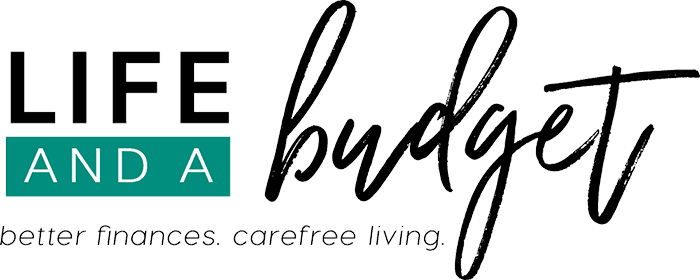 How to Track Monthly Expenses is the second step in the Ultimate Budgeting Series. If you’ve been following series, so far we’ve gathered your income. To read from the beginning, click here.
How to Track Monthly Expenses is the second step in the Ultimate Budgeting Series. If you’ve been following series, so far we’ve gathered your income. To read from the beginning, click here.
A financial education report from last year shows that 18 percent of Americans spend more than their income. Why? Well, more than likely, these folks don’t have a plan.
A successful plan includes tracking monthly income and tracking monthly expenses. The information you get from your list of expenses is what will help you stick to a budget.
You know your income, know the lifestyle you want to live, and your expenses are the final ingredient that helps your financial planning come together.
If you have too many expenses or your expenses are too high, this could lead to debt. So basically, the 18 percent of Americans who spend more than their income pretty much tells you why Americans are burdened by debt.
It doesn’t have to be that way, though. Evaluating your monthly expenses and adjusting them to align with your values will go a long way in helping you live how you want to live. With that said, today you’re going to learn how to track your expenses.
List of Monthly Expenses to Track
Get a sheet of paper and make a list of monthly bills you pay and categories your spending would fit into. Use the following monthly expenses list sample as a guide:
- Home
- Auto
- Food
- Childcare
- Giving
- Healthcare
- Utilities
- Personal
- Gifts
- Fun/Entertainment
- Savings
Let’s break down these broad categories and go over some of the common monthly expenses that you might need to include in your budget.
1. Home Monthly Expenses
Household expenses typically include expense related to your home. For the purposes of my budget, I include things like the following:
- rent payments
- mortgage payment
- home maintenance
- property taxes
- property insurance
- homeowner association fees.
2. Auto Monthly Expenses
Auto expenses typically include expense related to your car or transportation. For the purposes of my budget, I include things like the following:
- car payments
- savings for future car
- insurance payment
- gas
- car taxes
- public transportation
- ridesharing (Lyft or Uber)
- repair costs
3. Food Expenses
Food monthly expenses typically include expense related to eating at home or eating out. For example:
- all grocery trips
- school lunches
- work lunches
- drive-thru or take-out meals
- dining out
- social gatherings
- convenience stores and vending machines
4. Childcare Expenses
Childcare monthly expenses typically include:
- daycare expenses
- extracurricular activities
- after-school care
- babysitting
- school related expenses
5. Giving Monthly Expenses
Giving expenses typically include expense related to your charitable giving. For the purposes of my budget, I include things like the following:
- tithes
- kids fundraising at school
- contributions to charities at grocery stores
- etc.
6. Healthcare Expenses
Healthcare monthly expenses typically include expense related to your healthcare. Here are some items to consider including in this category:
- payroll deductions for health, vision, dental, life, and disability insurance
- monthly HSA savings
- deductibles, co-pays, and prescriptions
- eyeglasses
- braces and other dental associated costs
- dermatology costs
- weight loss, vitamins, and other associated costs
7. Utilities
Utility expenses typically include:
- electricity
- water
- gas
- phones (you can include cell phones too)
- internet
- cable
8. Personal Monthly Expenses
Personal monthly expenses typically include:
- toiletries such as deodorant, lotion, toothpaste, floss
- gym memberships
- grooming such as hair salon, manicures, pedicures, barber, and make-up
9. Gift Related Expenses
Gift-related monthly expenses typically the following:
- Christmas gifts
- baby shower gifts
- birthday gifts
- Mother’s and Father’s Day gifts
- graduation gifts
- work-related gifts
10. Fun or Entertainment Monthly Expenses
Fun or entertainment expenses typically include:
- Netflix
- Hulu
- movies
- weekly date nights
- museum or theme park costs
- fun money
11. Saving Expenses
Saving monthly expenses typically include anything you’re saving for such as:
- college funds
- down-payment funds
- vacations
- etc.
What is considered a fixed expense?
Based on the broad categories listed above, you will have a few fixed expenses every month. Fixed expenses are monthly expenses that do not change from month-to-month.
Your utility bills (ie: water) may change, but loan payments, mortgages, and rent payments typically stay the same. Knowing your fixed monthly expenses makes budgeting a little easier because the payments are predictable.
How to Track Your Monthly Expenses
![]() This is where you would ask yourself questions like, “Am I really spending only $350 on groceries every month? Can I really afford extra gymnastic classes for Izzy?”
This is where you would ask yourself questions like, “Am I really spending only $350 on groceries every month? Can I really afford extra gymnastic classes for Izzy?”
You may not like the answers to these questions, but the good part is once you’re informed, you can do something about it!
There are several ways to track your expenses. I currently use the YNAB app on my phone to track all of my expenses. I like it because it pulls the information for me and all I need to do is approve the transactions.
However, I understand that not everyone has $50 to put towards a yearly budgeting software, so I’m going to share with you what I did when I first started out – good ole paper and pen.
You can use a notebook and carry it with you or you could use the monthly expense worksheet I created for you that’s included in the series printable pack for $5. This monthly expense tracker is easy to use. You print one for each month and record the date of the transaction, the payee, amount, and the category. I’ve also included a notes section.
Tips for tracking your expenses:
- Use an expense tracker
- Keep your receipts
- Monitor your bank statements for fees
- Track cash withdrawals
- Add up expenses at the end of the month
- Compare with your income
- Have a come to Jesus moment (if necessary)

Your Next Steps
- Print your monthly expense tracker. If you haven’t downloaded the series printables, you can purchase them for $5 using the button above.
- Do the work! Don’t worry about cutting expenses just yet. Just track your spending.
- Prepare for the next step in the budgeting series — creating a savings plan!
Do you track your expenses? Why or why not?



